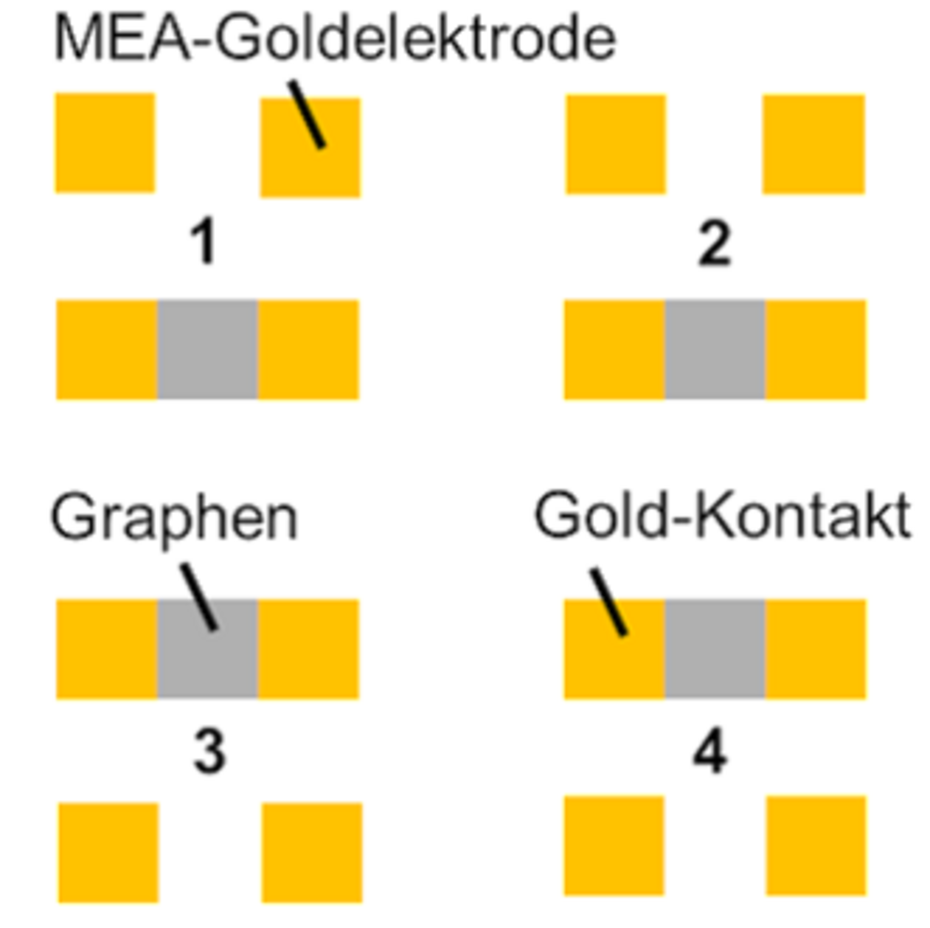
Project manager
Details
DFG
Duration01.05.2024 - 30.04.2027

GraphENS - Graphene electrodes for the detection of neurotransmitters from cells of the enteric nervous system
Enteric nervous system (ENS) is a complex neuronal network that governs many functions of the gastrointestinal tract (“brain in the gut”). Recent studies suggest that ENS plays a key role in the development of neurodegenerative diseases. Treatment of neurodegenerative disorders requires detailed understanding of the ENS in connection with neurotransmitters (NTs) and pharmaceuticals. ENS cell culture is an important method in this regard. ENS neurons can be isolated from the living tissue and subsequently grown on a substrate immersed in culture media. The substrate strongly influences the quality and the function of the cell culture. Moreover, there is currently no direct method of measuring several NTs from cell culture.
A promising approach to enable the parallel measurement of NT is the use of conductive two-dimensional material graphene as a biosensor. The aim is to develop a graphene-based electrical biosensor for the detection of NT directly from neuronal cell culture. This will allow to examine the cells of the enteric nervous system for the first time. The graphene electrodes will be chemically modified to demonstrate sensitive and selective detection of several selected NT. After that, the biosensor will be calibrated in physiologically relevant solutions. Subsequently, the best graphene biosensors will be used for the detection of multiple NT directly from cell culture.
For this purpose, the primary enteric neuronal culture is to be established parallel to the biosensor development. The quality of the cell culture will be checked with existing methods, e.g. commercial multi-electrode arrays (MEAs). In addition to the standard MEAs, novel, nanostructured MEAs are to be used in order to improve cell growth and the signal-to-noise ratio of the MEA signals. In addition, the MEAs will be covered with graphene to investigate the effect of graphene on the MEA signals, also in combination with nanostructuring.
After the sensor has been validated in cell culture, measurements with chips containing both graphene biosensors and optimized MEA electrodes are to be carried out in the final project phase. If successful, it will be possible with this setup to measure both neurotransmitters and action potentials. The temporal and spatial correlation of both datasets can enable a more comprehensive analysis of the ENS cells under the influence of different stimuli.